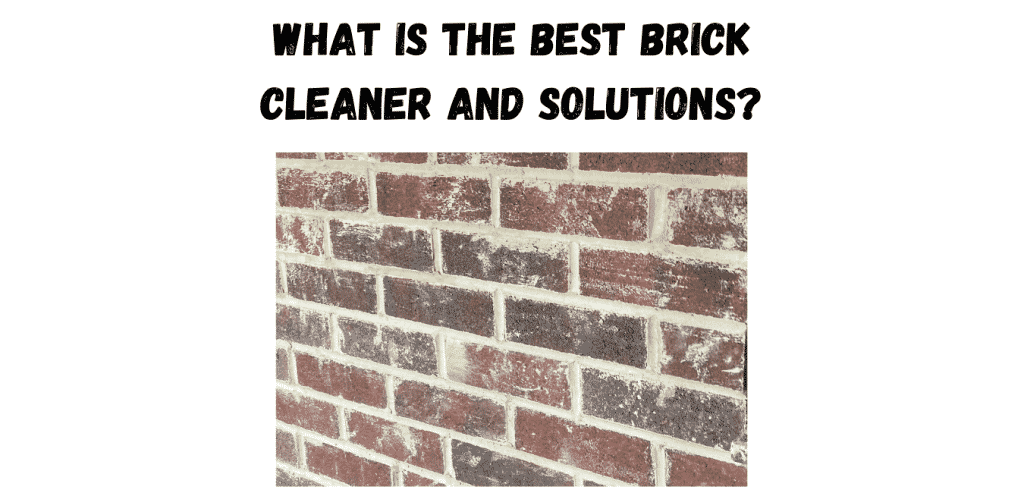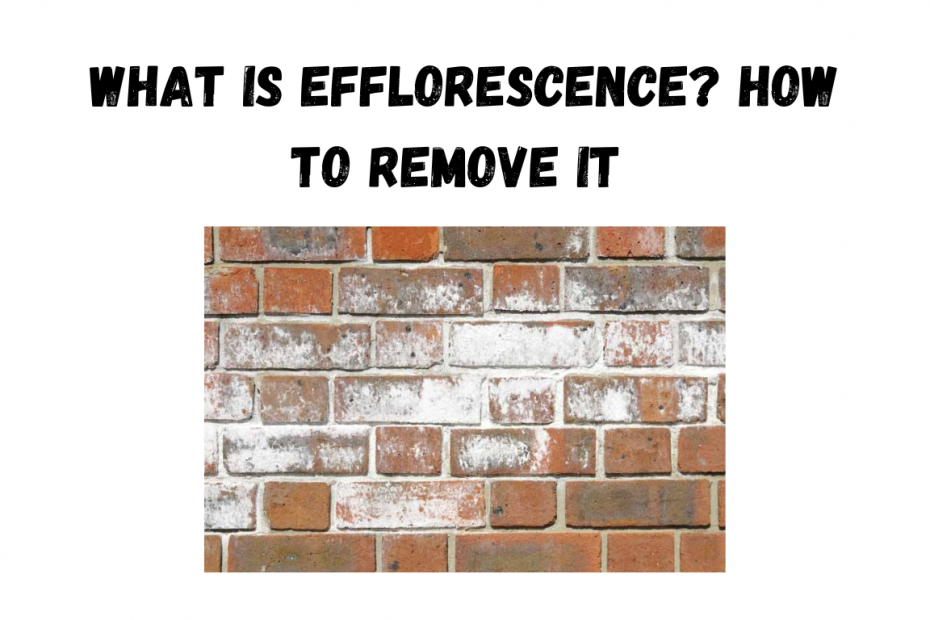What Is Efflorescence
Efflorescence How to Remove, Efflorescence: Causes, Prevention, and the Damage You Can Avoid by Addressing It Quickly.
The term efflorescence comes from Latin by way of French and means “to flower or bloom.” To the naked eye, it appears as if a residue blooms forth from the surface of building material. However, whether it is salt coming out of bricks or efflorescence on walls, many people misunderstand what it is, how to get rid of it, and what it might mean for the future of their property.
Efflorescence Is a Process that Deposits Salt on Masonry
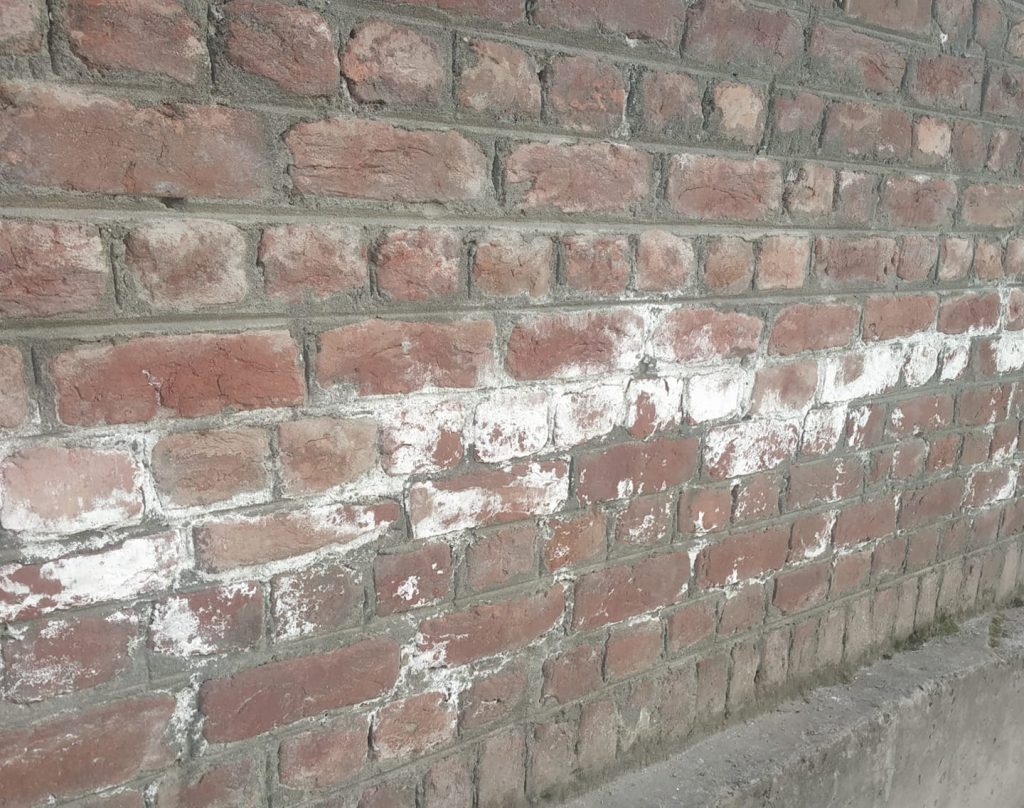
Efflorescence appears as a chalky greyish-white residue on porous building surfaces. The residue itself is a soluble salt compound that remains after any water has evaporated out of the masonry. It commonly appears on brick, paving stones, concrete, stucco, and many other materials.
Efflorescence Relies on the Relationship Between Salt and Water
The salt residue is the byproduct of a chemical reaction that requires three conditions. First, salt needs to be present for efflorescence, either in the masonry itself or the surrounding area. In addition, efflorescence requires moisture. Finally, the construction material must be porous, allowing water to pass from the interior to the surface.
Primary efflorescence occurs when porous masonry absorbs water that dissolves salts already within the material. The saline solution migrates to the material’s surface, where the water evaporates and leaves the salt behind. Although it requires cleaning and can discolour the building material, primary efflorescence typically poses no threat to the structural integrity of a building.
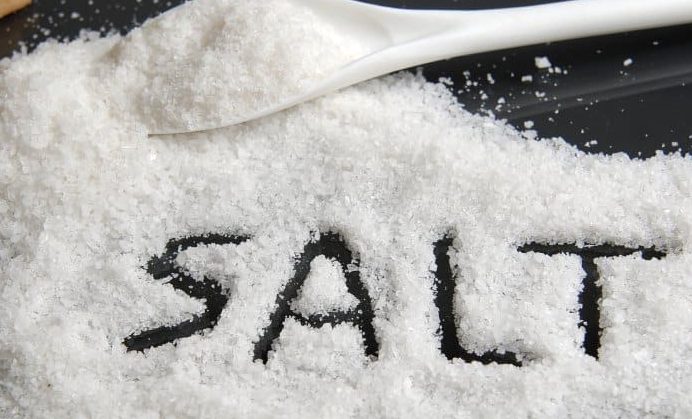
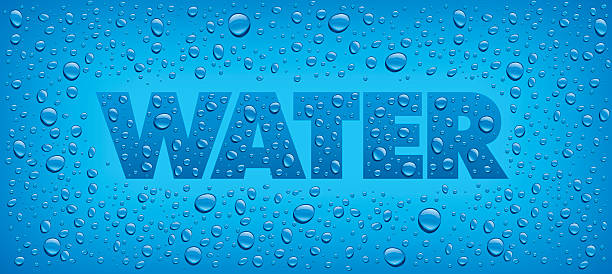
A structure can draw in water and salt from external sources, resulting in secondary efflorescence. Frequently, masonry in direct contact with the soil causes this phenomenon. In some cases, it is seasonal, mainly if one time of year brings much more precipitation than the others. Secondary efflorescence should be addressed quickly, as it will degrade the building materials.
Efflorescence Can Be a Benign Symptom of a Harmful Disease
The salts that comprise the visible result of efflorescence are not harmful. However, many people confuse the residue with potentially hazardous issues like mould or fungus. Unfortunately, efflorescence could be the symptom of an underlying problem that might threaten the integrity of the masonry. Therefore, builders and homeowners must understand the nature of the underlying problem and how to fix it.
Powerful Chemistry Can Degrade Building Materials
Porous building materials can wick water from up to 6 miles away. This “capillary action” is identical to how trees and other plants pull water through their root structure. It is a powerful mechanism, and the water will cause primary efflorescence with any salts present in the material. And, of course, capillary action will pull in anything dissolved in the water, salts included.
Primary efflorescence will cease once the salt has been drawn out of the material. However, secondary efflorescence is dangerous to building materials because it continuously causes salt to build up on the surface.
As the salt concentration increases, osmosis begins to draw water faster, increasing the hydrostatic pressure within the material. This pressure can reach upward of 5,000 psi, which is highly destructive to most masonry, which can only withstand 2,000-3,000 psi. So, as the hydrostatic pressure increases, the building material degrades, threatening the structure.
As the pressure increases, the masonry will begin to crack and crumble. This damage from osmotic pressure is called spalling, an effect that also happens during freeze-thaw cycles when too much moisture is present. Both phenomena illustrate how important it is to protect buildings and materials from unnecessary exposure to water.
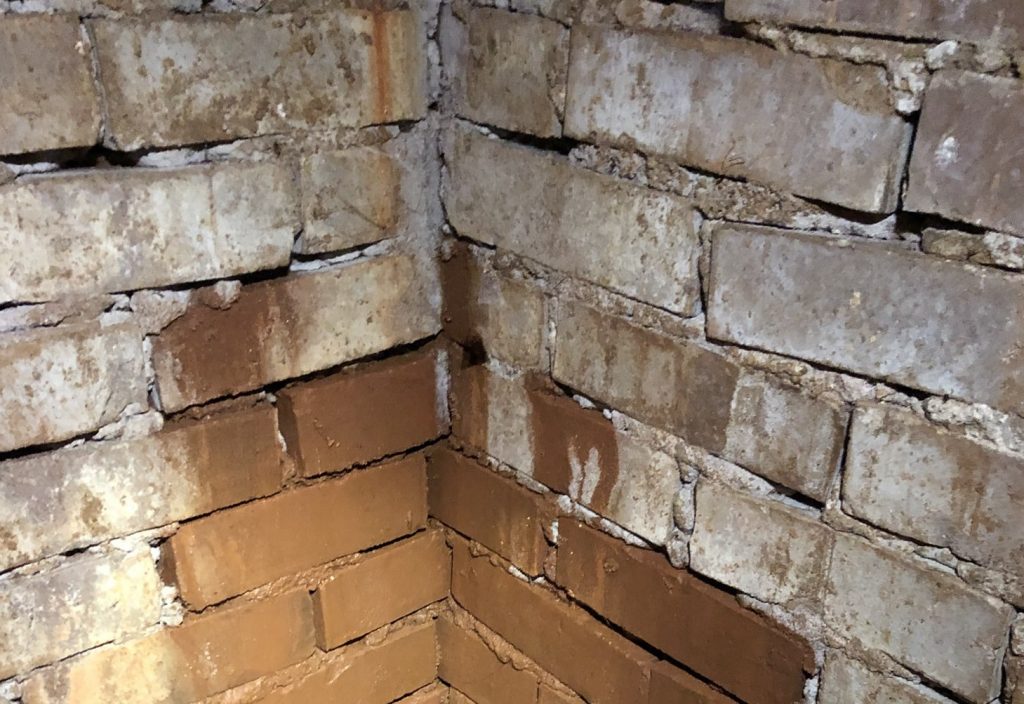
Efflorescence how to remove
Stop Water, Stop Efflorescence
Since efflorescence is a water issue, the most effective way to prevent it is to keep building materials dry. New build contractors should ensure that materials are not on the ground but on skids or pallets to prevent efflorescence. Furthermore, they should cover everything with waterproof tarpaulins, especially overnight.
Builders can also employ grout and mortars with admixtures that reduce water content while maintaining a good flow. In addition, they can use mechanical vibration when applying the mortar to prevent voids from forming. Furthermore, quality construction always helps. For example, proper eaves, coping, and flashing will deter even the most driven rain from entering a wall
Homeowners and landscapers have their part to play as well. For example, water elements like sprinklers or irrigation systems can cause secondary efflorescence, especially if there is a high soluble salt content in the area. Proper placement and judicious operation can prevent long-term property damage.
Anything that breaks the capillary action of porous material should stop efflorescence cold. For example, capillary breaks like polyethene sheeting between the masonry and soil prevent water and salt from entering.
Hydrophobic sealants make an excellent final step in prevention. However, builders and homeowners should only use them once they have done everything possible to address water infiltration. If water can still move freely in and out of the building material, perhaps through a spot that cannot be sealed, the water can deposit salt within the masonry structure.
This process is called crypto-florescence, and it is tough to detect. Unfortunately, the salt crystals will grow until they increase the pressure within the material’s pores and cause internal spalling. Therefore, homeowners and builders should take every precaution to ensure that w
water cannot easily infiltrate building materials.
Treatment for efflorescence
Efflorescence How to Remove
Cleaning Efflorescence Is Easy Once You’ve Solved the Problem
Sometimes efflorescence happens despite every attempt at prevention. Fortunately, it is often easy to clean, though it depends on the composition of the salt residue. Sometimes, a dry, stiff brush will suffice. For tiny patches, handwashing with mild detergent and a brush may work.
Many chemical cleaners claim to be effective at removing efflorescence. Since these mixtures are proprietary, following the manufacturer’s instructions is best. Most of these cleaners have acids in their formulas that can degrade the material, so one should take care they do not penetrate the material too deeply. Pre-soaking the masonry before cleaning will fill the pores, preventing the chemicals from penetrating too deeply.
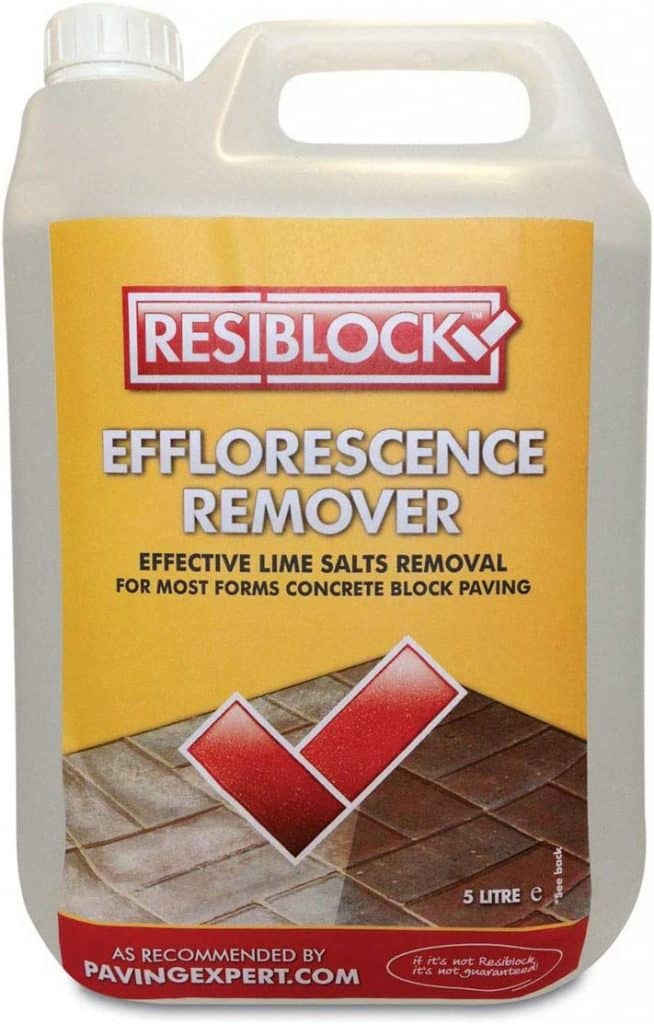
A cheaper solution may be a homemade mixture of 1 part muriatic acid and 12 parts water. As with chemical cleaners, pre-soaking may prevent the acid from degrading the material from the inside. Regardless of the removal method, one ought to remember that efflorescence can be a symptom of chronic water issues. If that is the case, cleaning off the salt deposits with water and chemicals might only exacerbate the underlying problem.
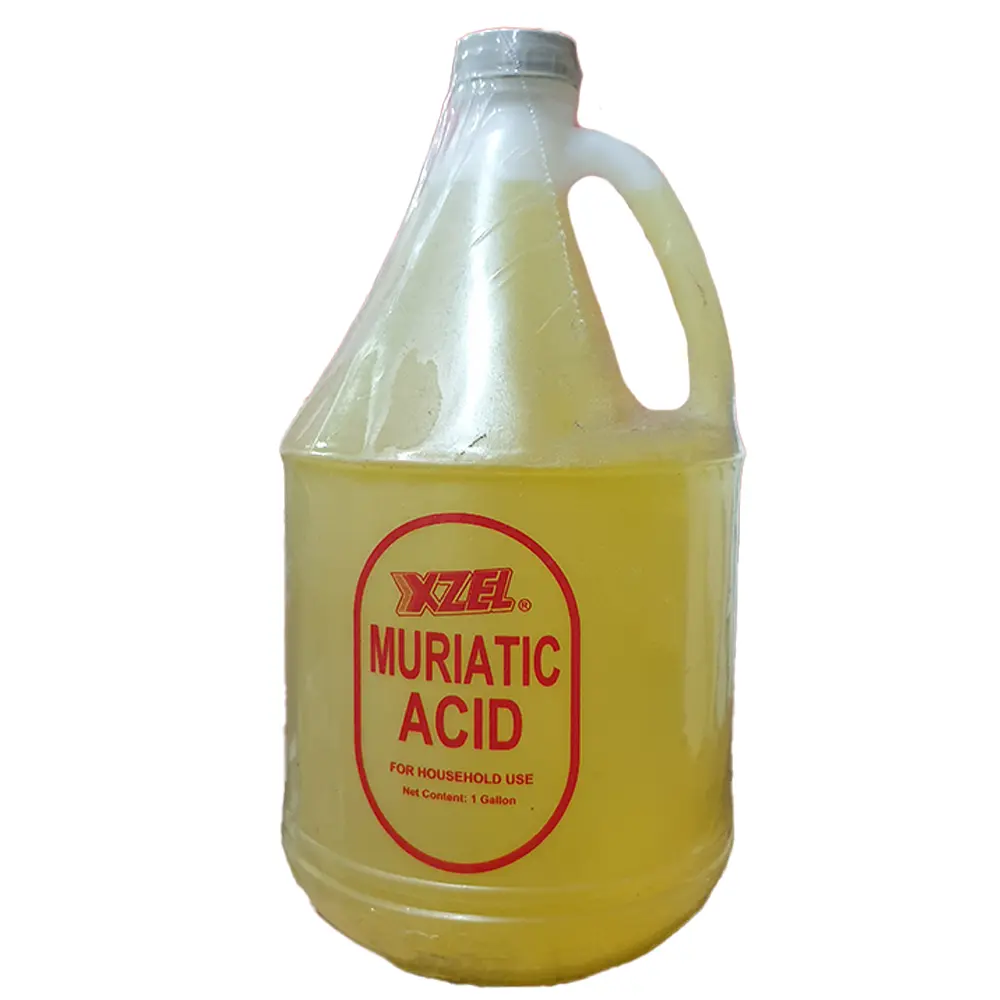
5 Things to Consider if You See Efflorescence
If you have seen efflorescence in the basement, on bricks, concrete, or pavers, you should try to figure out the most immediate cause. It is most likely water, but knowing the composition of the salt residue can help you figure out whether you have primary or secondary efflorescence and how you ought to address it. Here are five things you should think about if you see efflorescence.
1 – How old is the structure?
If it’s less than a year old, the most likely scenario is that the source is the material itself. It may have become wet during construction, leading to limited primary efflorescence. On the other hand, if the structure is over a year old, a new water source could be infiltrating the material. Then you should check for leaks.
2 – Where is the water coming from?
Leaky pipes, faulty drains, and errant sprinklers can cause water damage and efflorescence. However, they are not the only sources of water that you need to think about. Enough moisture in the air can start the process, so you must also consider condensation.
3 – Is the construction faulty?
Sometimes reviewing the construction of a building can give clues to the most likely water source. The roof, flashing, and wall junctures are all susceptible as they age, and any fault in design or execution could speed up the process.
4 – Do you have faulty materials?
Depending on whether you have seen efflorescence in your home or a pile of masonry, you may be able to inspect the quality of the building materials. Are there cracks, blemishes, or any other visible faults? Hydrophobic sealers or patches could prevent future efflorescence if there’s only one way for water to enter.
5 – How much effort should you expend?
Primary efflorescence is not usually problematic. Therefore, it may not be necessary to send away for a lab analysis of the soil near a building or have a thorough inspection of all possible moisture paths on the property. However, these options are available for builders or property owners who have a lot of money at stake. Each person must choose how far they want to go if they can’t find the source of their efflorescence immediately.
Efflorescence Is Not Your Biggest Problem
Efflorescence itself is not harmful. Unfortunately,
Links – WIKI
